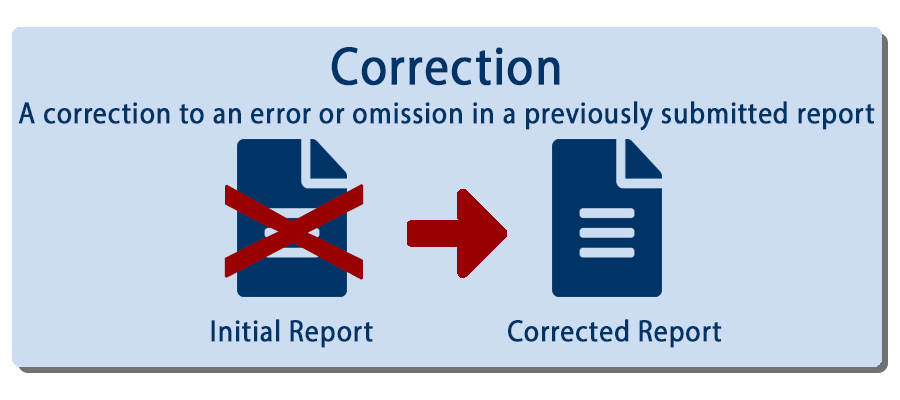NPDB Insights - October 2020
Attestation Teleconference on November 18!
On Wednesday, November 18, the NPDB will hold a live teleconference on how and why to attest to the NPDB, detailing our outreach and education effort to ensure eligible organizations meet NPDB reporting, querying, and confidentiality requirements. The teleconference will include a Q&A session with NPDB staff members.
New Customer Service Survey!
As part of our efforts to enhance customer experience, we now have a satisfaction survey for all NPDB Customer Service Center callers. Following all calls, you will have the option to provide feedback about your customer experience. We ask that all callers please consider participating in the brief survey.

Is It Reportable?
If a state board that regulates dieticians issues a cease and desist order against a person who is not a registered dietitian but who is practicing as one, is the issuance of the cease and desist order reportable to the NPDB?
Yes. In this example the state regulates the practice of dietetics and prohibits individuals from practicing as dieticians without being licensed by the board — even if they do not refer to themselves as dieticians, licensed dieticians, or registered dieticians. NPDB regulations require the reporting not only of individuals who are licensed, but also those who hold themselves out to be so licensed. Therefore, the cease and desist order issued by the board is reportable. (The state board should select "No License" in the license number field.)
The NPDB Query Fee Waiver Period Has Ended

To support our users' efforts in combatting the COVID-19 pandemic, the NPDB temporarily waived query fees for One-Time Queries and Continuous Queries (both initial enrollments and renewals). The waiver was retroactive from March 1, 2020, through September 30, 2020. During the query fee waiver, users submitted more than 6 million One-Time Queries and Continuous Queries (both initial enrollment and renewals).
The NPDB issued query credits to any entities who submitted queries and were charged during the waiver period. More than 2.1 million query credits were distributed across 11,000 health care entities and organizations.
All query fee collections resumed on October 1, 2020. The NPDB is legally required to recover the full cost of its operations, which it does through user (query) fees. We are reverting to the previous fees in effect: a $2.00 fee will be charged for all One-Time Queries and Continuous Queries (both initial enrollment and renewals), and a $4.00 fee for Self-Queries.
For questions about the NPDB query fee waiver, visit our COVID-19 FAQs page, or contact our Customer Service Center.
Quick Tips: Secure Messaging

Because information security is important to us, the NPDB uses a secure messaging system for direct electronic communication between entities, practitioners with reports, and NPDB team members.
Secure messages are initiated by the NPDB. When you receive a secure message, the NPDB will send you an email notification with a link to sign in to your account and view the message. Once signed in to your account, click View Data Bank Correspondence on the Select an Option page to view and reply to the message. We use secure messaging to notify entities when a report requires a correction, to request information for a dispute resolution case, or to relay other important user information.
The NPDB also uses secure messaging to communicate with practitioners who are going through the dispute resolution process. We encourage practitioners to upload all documents related to their dispute resolution case. If you have difficulty uploading documentation, please contact the Customer Service Center.
For more information about secure messaging or uploading documents via the secure messaging system, contact the Customer Service Center.

Dear NPDB
What is the difference between a Correction Report and a Revision-to-Action Report?
The NPDB has four different report types: Initial, Correction, Revision-to-Action, and Void. Corrections and Revisions-to-Action can only be submitted once an Initial Report has been received and processed by the NPDB.
Correction

A Correction fixes an error or omission in a previously submitted report. The reporting entity must submit a Correction as soon as they discover an error or omission is present.
A Correction Report, which can be submitted as often as necessary, replaces the previously submitted report. (The previous report is then no longer part of the disclosable record.)
The NPDB provides a copy of the Correction Report to the reporting entity and all queriers who received the previous version of the report within the past 3 years. The NPDB also notifies the subject of the report.
Examples of when a Correction must be submitted:
- There is a spelling error in the practitioner's name
- The action code is incorrect
- Information about the action taken is not included on the report and needs to be added
Revision-to-Action

A Revision-to-Action is a modification to an action that has already been reported. In other words, it is a report of an additional or continuing action that is related to a previously reported action.
A Revision-to-Action does not replace the preceding report(s). Rather, it becomes an additional part of the disclosable record.
Examples of when a Revision-to-Action must be submitted:
- An additional sanction is taken against the subject of a report based on a previously reported incident
- The length of an action is extended or reduced
- Clinical privileges, professional society membership, accreditation, program participation, or a license is reinstated
- The original suspension or probationary period ends
For a more in-depth overview of all four report types, check out the infographics on our About Reports page. For more examples of when specific reports should be submitted, visit the Types of Reports section of the NPDB Guidebook.
The latest updates and resources are available at https://www.npdb.hrsa.gov.
Previous editions of NPDB Insights are available in our archive.
 An official website of the United States government.
An official website of the United States government.



